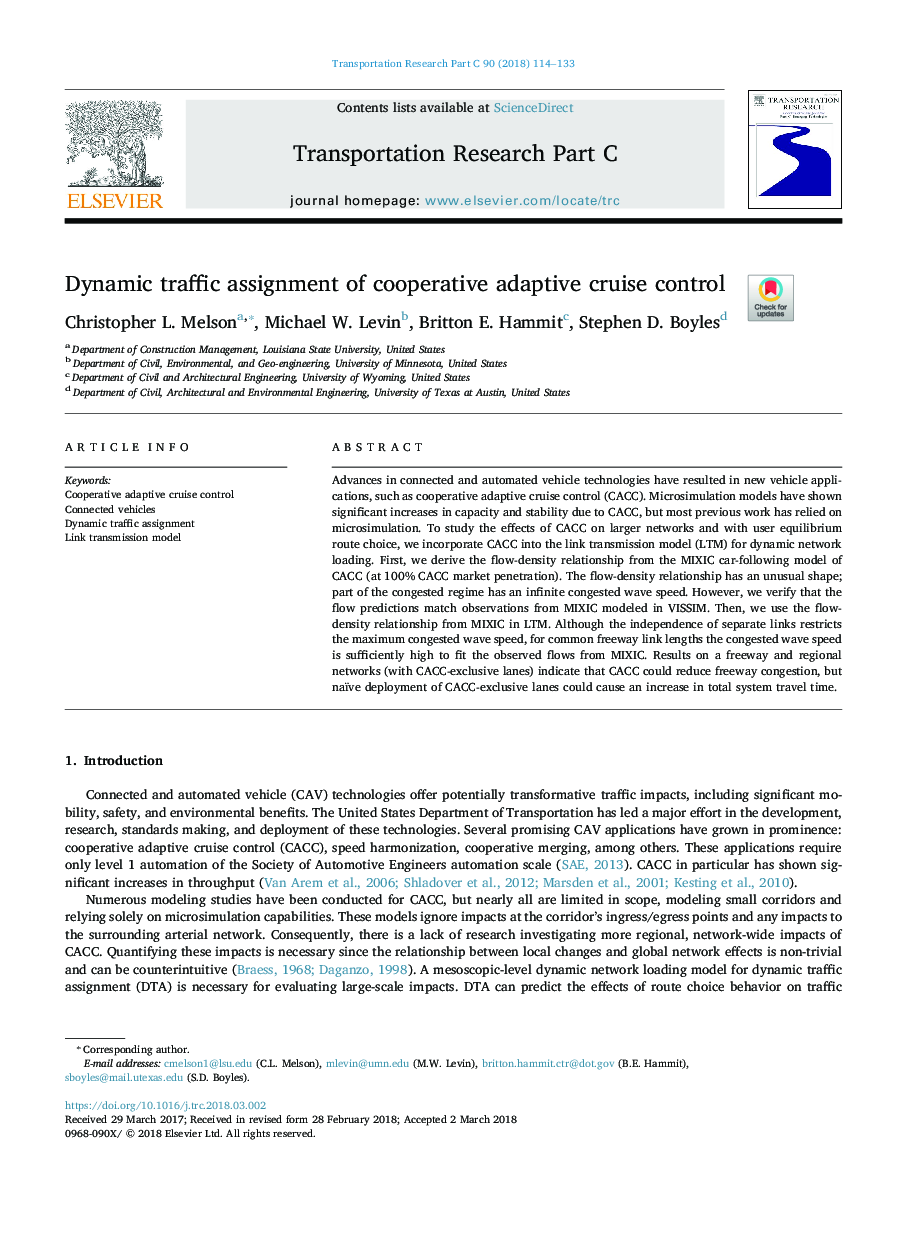| Article ID | Journal | Published Year | Pages | File Type |
|---|---|---|---|---|
| 6935973 | Transportation Research Part C: Emerging Technologies | 2018 | 20 Pages |
Abstract
Advances in connected and automated vehicle technologies have resulted in new vehicle applications, such as cooperative adaptive cruise control (CACC). Microsimulation models have shown significant increases in capacity and stability due to CACC, but most previous work has relied on microsimulation. To study the effects of CACC on larger networks and with user equilibrium route choice, we incorporate CACC into the link transmission model (LTM) for dynamic network loading. First, we derive the flow-density relationship from the MIXIC car-following model of CACC (at 100% CACC market penetration). The flow-density relationship has an unusual shape; part of the congested regime has an infinite congested wave speed. However, we verify that the flow predictions match observations from MIXIC modeled in VISSIM. Then, we use the flow-density relationship from MIXIC in LTM. Although the independence of separate links restricts the maximum congested wave speed, for common freeway link lengths the congested wave speed is sufficiently high to fit the observed flows from MIXIC. Results on a freeway and regional networks (with CACC-exclusive lanes) indicate that CACC could reduce freeway congestion, but naïve deployment of CACC-exclusive lanes could cause an increase in total system travel time.
Keywords
Related Topics
Physical Sciences and Engineering
Computer Science
Computer Science Applications
Authors
Christopher L. Melson, Michael W. Levin, Britton E. Hammit, Stephen D. Boyles,
